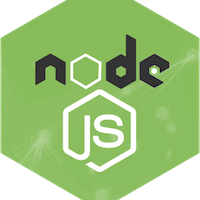Selecting the Right Node.js Framework for Your App

Node.js is an open source and cross-platform runtime environment for creating server-side web apps. The event-driven, non-blocking I/O model allows Node.js to be lightweight and efficient, which is a draw for many developers who have adopted it.
Node.js enables developers to use JavaScript on both the front end and the back end of an application. This makes maintaining the source code easier and more consistent, and speeds up app development, as only one programming language is needed.
There are many frameworks that come with Node.js. They are built on top of Node.js and extend its functionality, mostly by making apps faster, more scalable, and easier to prototype and develop.
Each framework excels in different areas, so selecting one comes down to personal preference and the specific needs of the project. Here are some of the most popular Node.js frameworks.
Express is virtually Node.js, with a thin layer added on top. Express incorporates such essential web application features as simple routing, middleware, and a template engine with file serving.
Koa is developed by the same team members associated with Express, but Koa is an even more minimal version, with no inclusion of any middleware. Callback is eliminated through the utilization of its ES6 Generator feature, which is an advantage.
Hapi is also quite popular, and was built around the idea that configuring is better than coding. It sports built-in support for input validation, authentication, and caching. It's a stable framework with some big-name supporters, and it isn't likely to go anywhere any time soon.
Meteor was designed to construct web applications that are in a continuous synchronization state with the server. It has a real-time updating feature, so when changes are made to the web application, the template automatically reflects that. This framework took the opposite philosophy of Koa: Instead of making it minimal, the developers of Meteor designed it to be a full-stack framework package that covers server, desktop, web, and mobile applications.
Sails is similar to Express but utilizes MVC, or model-view-controller, design process at its core. It enables fast bi-directional communication between the client and server that is event-driven and thus highly efficient. It touts large support on the back-end side for a diverse range of database technologies and is also greatly compatible with a large range of front-end technologies.
Restify was initially designed to provide a developer with complete control over HTTP interactions and the ability to closely observe latency times. This means Restify is ideal for debugging web applications and tweaking server and web application performance.
Selecting a Node.js framework is a subjective undertaking, as developers will consider each framework’s speed, simplicity, weight on the application, learning curve, flexibility, and configuration. Examining several different framework options, like the ones listed here, will help you pick the most appropriate one for building your JavaScript application.

